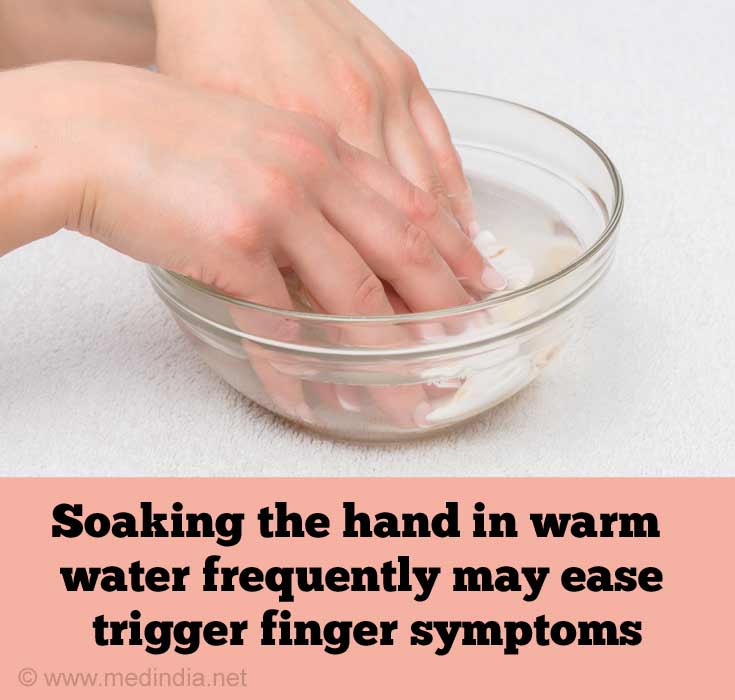How do you Diagnose Trigger Finger?
The mainstay of diagnosis is a physical examination. Only in special circumstances, other tests may be ordered.
- Physical Examination: The doctor will carry out a thorough physical examination of the hand and ask relevant questions to obtain information about its possible cause. The doctor will feel for tenderness or any lumps in the palm, evaluate the degree of mobility in the finger, and check for painful areas.
- Imaging: This is required only in severe cases when more information is required about the structure of the finger joint to pinpoint the deformity. X-ray imaging is usually sufficient, but in rare cases computed tomography (CT) scan or magnetic resonance imaging (MRI) may be ordered.
- Blood Tests: If an underlying cause, such as rheumatoid arthritis is suspected, certain blood tests may be ordered to look for antibodies associated with the condition.
How do you Treat Trigger Finger?
Treatment may be of two types – non-surgical and surgical. Usually, non-surgical approaches suffice to heal the condition. However, in severe cases, surgery is usually the only option.
Non-Surgical Treatment
- Rest: The finger should be kept at rest and should not be used for gripping, grasping or any other movement that can provoke pain.
- Splinting: A commercially available plastic splint can be used to keep the affected finger in a resting position.
- Moist Heat: Exposure to moist heat intermittently may ease the movement of the finger.

- NSAIDs: Non-steroidal anti-inflammatory drugs (NSAIDs), such as ibuprofen, celecoxib, diclofenac, naproxen, or indomethacin, can be used alone or in combination with painkillers such as paracetamol to relieve pain and inflammation.
- Corticosteroid Injections: Corticosteroids such as prednisone, betamethasone, triamcinolone, or prednisolone can be injected into the sheath of the affected tendon. This can reduce swelling and pain, thereby facilitating mobility.
- Percutaneous Trigger Finger Release: This is a minimally invasive procedure that does not require a surgical incision. It involves splitting the tendon sheath to break away the constriction with a needle, under live ultrasound guidance. In this procedure, recovery is much quicker than conventional surgery and there is a lesser chance of infection.
Surgical Treatment
Surgery is recommended if the non-surgical interventions fail to relieve the symptoms. This is a minor outpatient procedure that is usually carried out under local anesthesia. Surgery is aimed at excising the constricted portion of the tendon sheath to relieve the tension so that the tendon can glide smoothly. The first sign of a successful surgery is that the popping or clicking sounds stop almost immediately. However, it may take up to two weeks for the finger mobility to be restored. Sometimes, hand physiotherapy may be required to regain full functionality.
How do you Prevent Trigger Finger?
The best preventive measure is to avoid activities that can cause or aggravate trigger finger. These include activities that involve repetitive gripping or grasping, such as operating hand-held vibrating tools and machinery. Particularly, the following tools should not be operated:
- Hammer / pneumatic drills
- Powered sanders / lawn mowers
- Chipping hammers
- Concrete breakers
- Disc cutters
- Grinders
- Polishers
- Chainsaws








